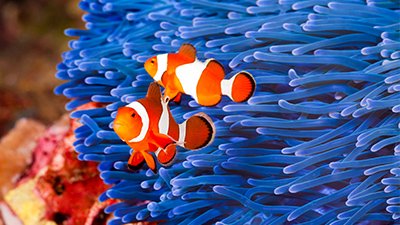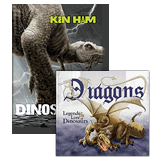Made to Match
Joshua Tree National Park, Public Domain via Wikimedia Commons
Design in Biology
on April 1, 2023What if your survival depended on a single insect much smaller than you? For the Joshua tree, that’s reality.
The largest of the yuccas, the Joshua tree grows only in the Mojave Desert (US). Without nectar to attract pollinators, the Joshua tree species (Yucca brevifolia and Yucca jaegeriana) rely solely on the yucca moth for pollination, and the moths rely on the trees for reproduction. Each tree is pollinated by a different species of yucca moth (Tegeticula synthetica and Tegeticula antithetica). The yucca moths lay their eggs exclusively inside the Joshua tree’s flowers. The ovipositor (egg-laying organ) of each moth species is a perfect match for the flower size of the Joshua tree species it pollinates.
Inside the flowers, the moths use specially designed mouthparts consisting of tentacles to gather pollen. These mouthparts are unique among all insects. While laying their eggs, the moths tuck the pollen under their “chin” for safekeeping and then deposit it right where it needs to go on the tree’s flower so that the flower can be pollinated. When the young moth larvae hatch, they eat just enough of the flowers’ seeds to survive before morphing into adult moths to start the process over again.
While evolutionists often mistakenly call special relationships like this coevolution, they are better described as designed adaptation. God gave the original kinds incredible genetic variability to develop these types of relationships.
The symbiotic relationship between the yucca moth and the Joshua tree serves an essential purpose in the ecosystem of the Mojave Desert. The Joshua tree provides food and shelter for animals, and its flowers provide the main source of wet food for insects, ravens, and ground squirrels in the spring. An entire ecosystem flourishes thanks to God’s specialized design for the largest yucca tree and a little moth.
Check Out These Other Creatures That Are Better Together

The Clownfish & anemone
Clownfish live protected within the tentacles of sea anemones since they are immune to the anemone’s venom. In return, the fish keep the anemones clean and parasite-free. Clownfish also provide aeration and thus oxygen-rich water for the anemones.
The Ant & Aphid
Using their antennae, ants “milk” aphids for a sugary liquid they produce called honeydew. What do the aphids get out of the deal? Protection from predators and parasites.
The Bat & Pitcher Plant
In Borneo, woolly bats sometimes roost inside tropical pitcher plants. The bat benefits from a place to rest, and the plant gets to make a meal of the bat’s guano (feces), providing the plant with vital nutrients
The Bacteria & You
You provide a home and nutrients for the bacteria living on your skin. The helpful bacteria provide you with protection against harmful bacteria.
This article is from Answers magazine, October–December, 2022, p. 24.
Recommended Resources
- © 2024 Answers in Genesis
- Privacy Policy
- Contact
- About




